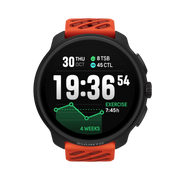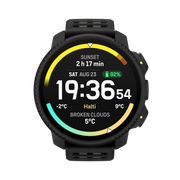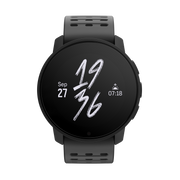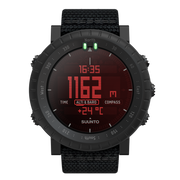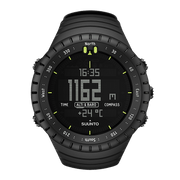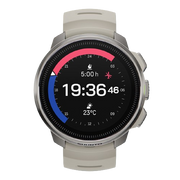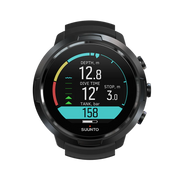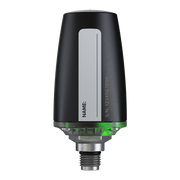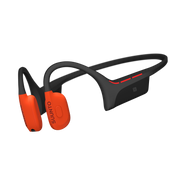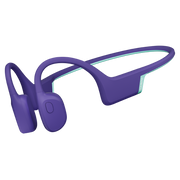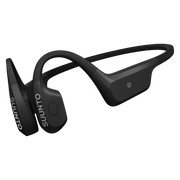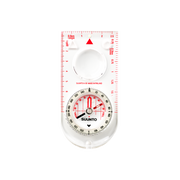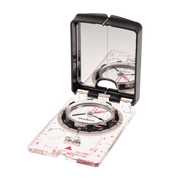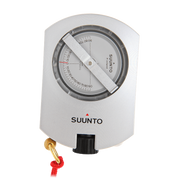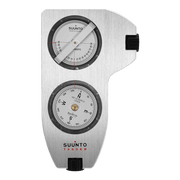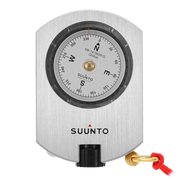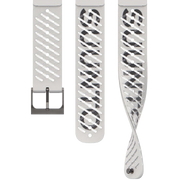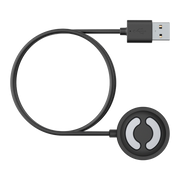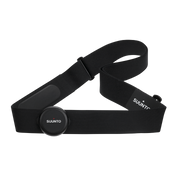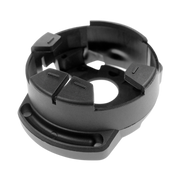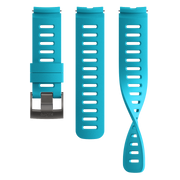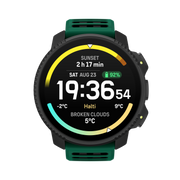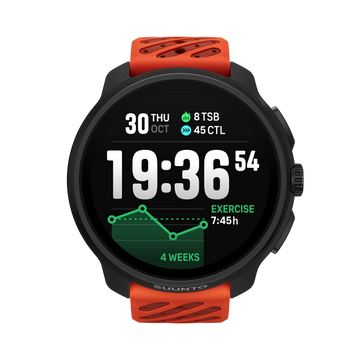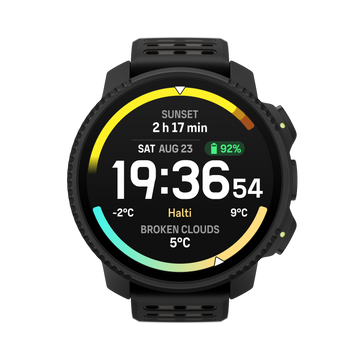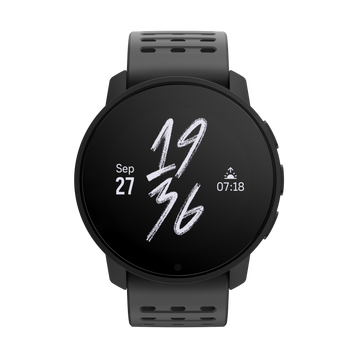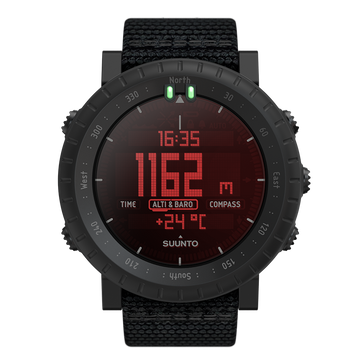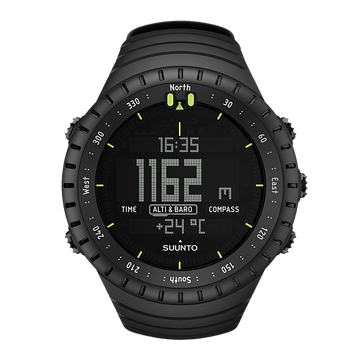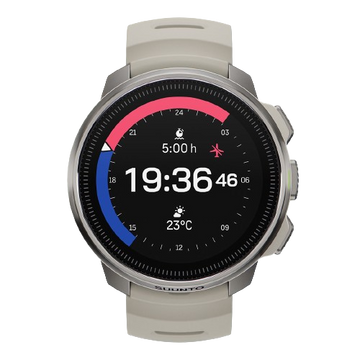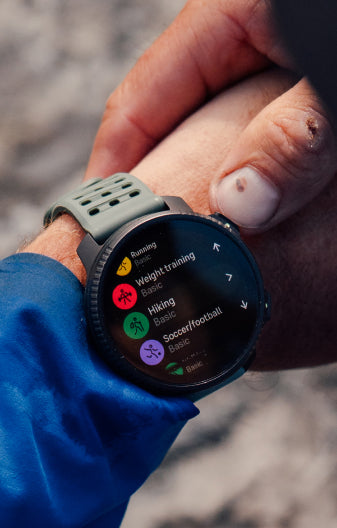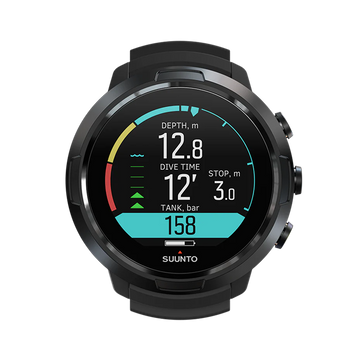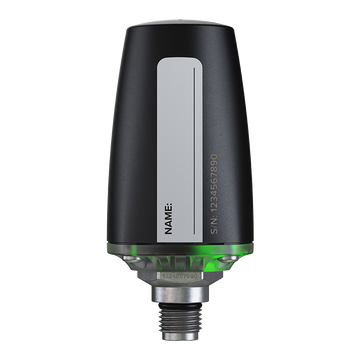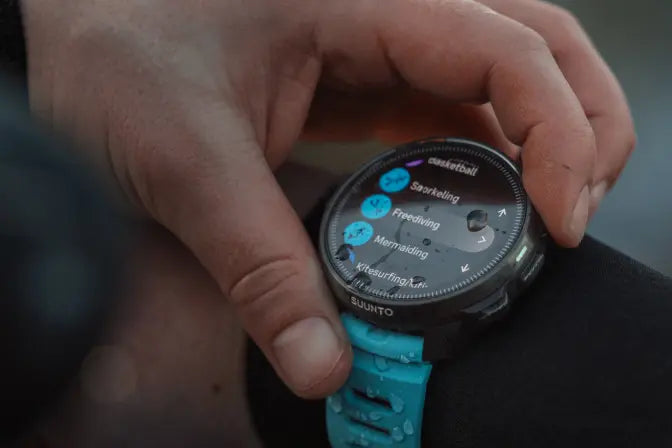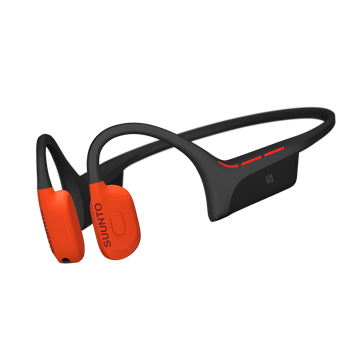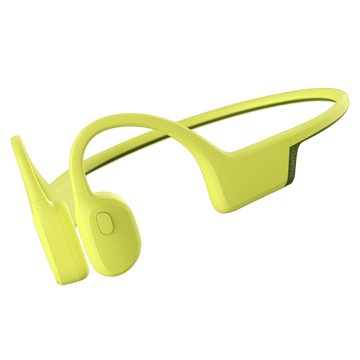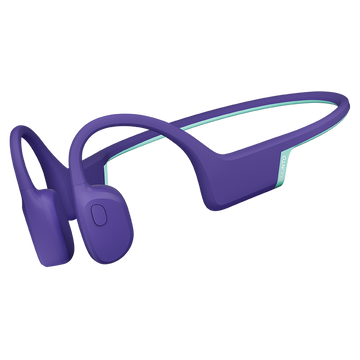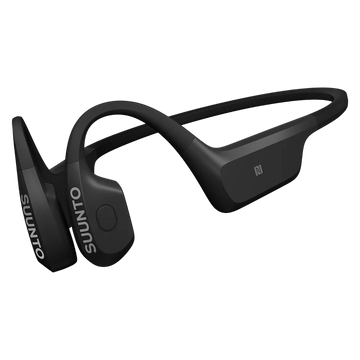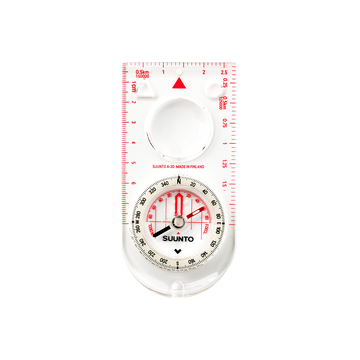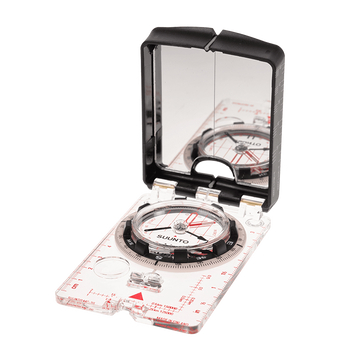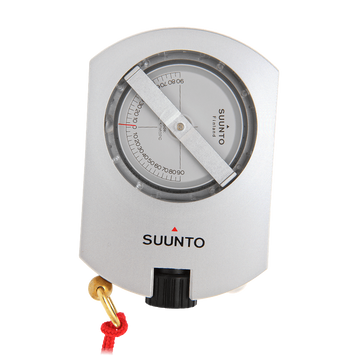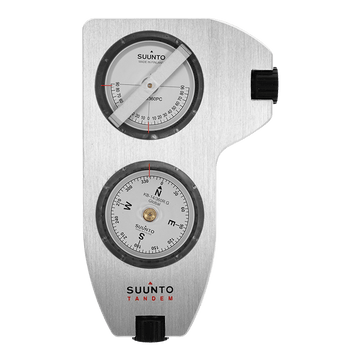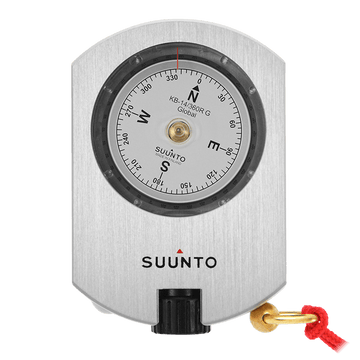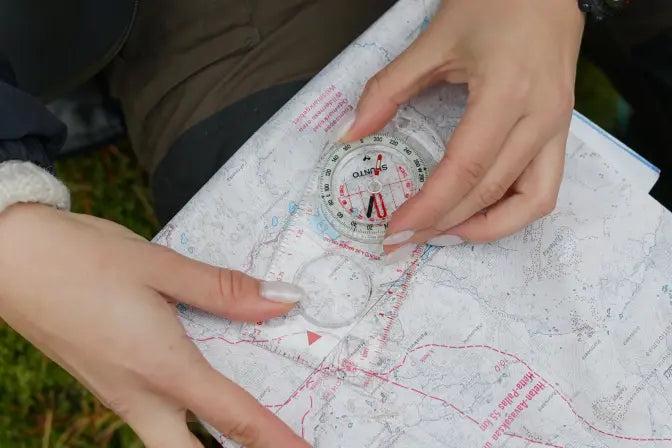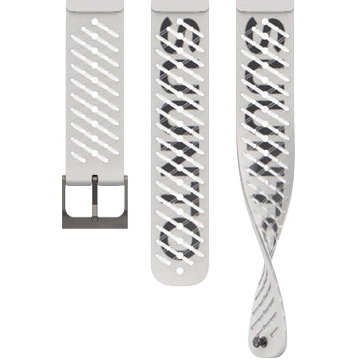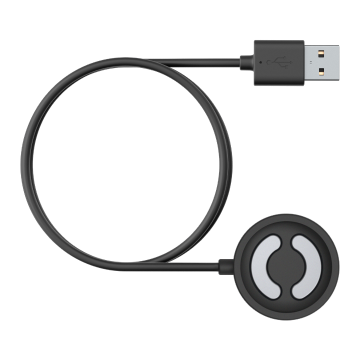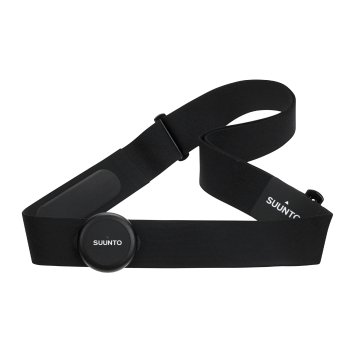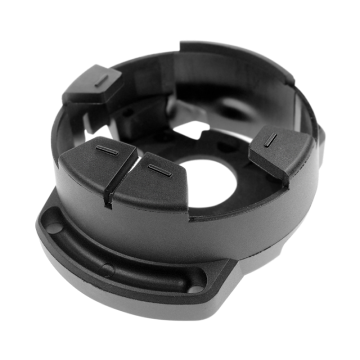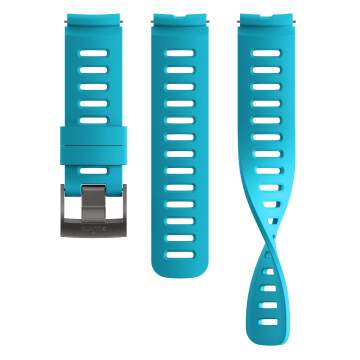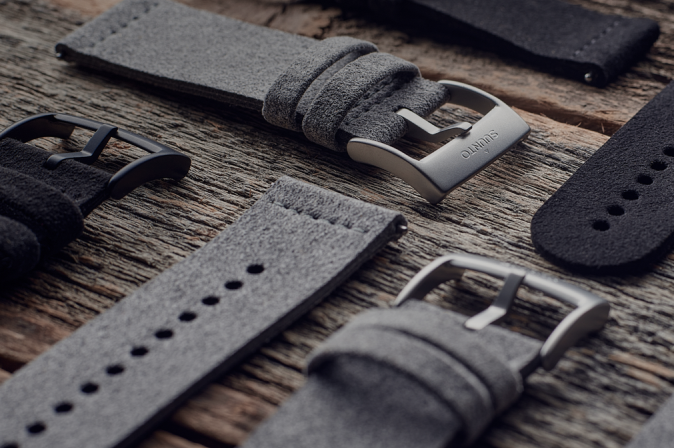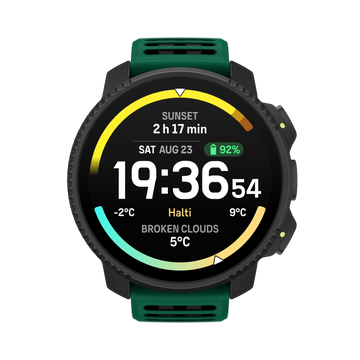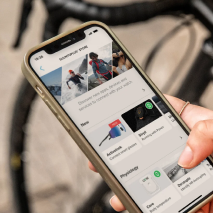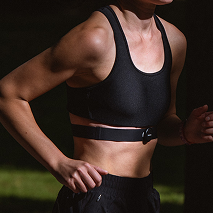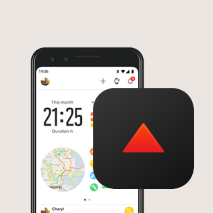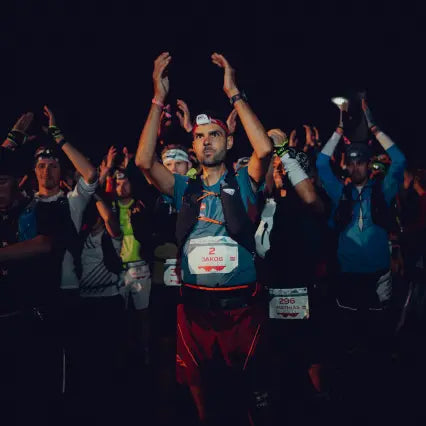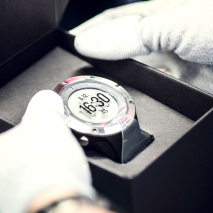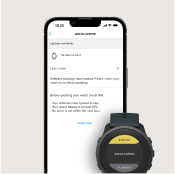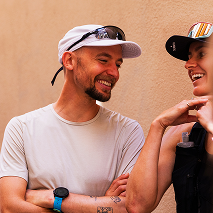

Suunto Blog

Sync Your Tailored Näak Nutrition Plans to Your Suunto Watch
We have partnered with the nutrition experts at Näak to provide you with real-time nutrition guidance.
Gastric and dietary issues affect 85% of runners and are the leading cause of abandonment, says Näak. The company has made reducing these figures their greatest challenge.
First, they created the Nutrition Calculator: a simple, concrete, and user-friendly online tool that designs personalized nutrition plans for you, based on your profile, goals, and race characteristics.
Now, Näak partners with Suunto to sync your custom nutrition & hydration plan to your Suunto watch for real-time guidance. A plan is a plan, but you also need to execute it well. That's when the SuuntoPlus Näak Nutrition Guide comes into play!
How to Use
1. Go to the Näak website and plan your nutrition needs for your race. Select the race you are interested in. Fill in the required info, like your personal profile and a target time.
2. Click ‘Add to Suunto’ on the result page to connect your Näak and Suunto accounts. The plan is then pushed to your Suunto account.
3. Before starting an activity, go to ‘Exercise settings’ -> ‘SuuntoPlus’ and scroll down to select ‘Näak Nutrition Guide’ for your race.
4. During the activity, you will see the nutrition guidance on its own screen on your Suunto watch.
All images by Simon Morice. Athlete Arthur Joyeux Bouillon.

Ultra running mantras: Mental fuel for the long haul
Courtney Dauwalter swears by the power of mantras like “Believe” to push through ultra-running challenges. Inspired by her, the ultra community shared their go-to phrases.
Courtney Dauwalter, one of the greatest athletes in ultra running, has long emphasized the importance of mental toughness. Known for her resilience, Courtney breaks races into manageable milestones, using simple yet powerful mantras such as "embrace the pain" and "right foot, left foot" to manage pain, maintain rhythm, and stay focused.
“Believe is a mantra that I use pretty often,” Courtney shares. “If you just repeat it over and over in your head, there’s no room for anything else but to believe that you can keep on going no matter what it looks like.” For her, the "pain cave" is a mental space where growth happens, a place she visualizes as chiseling away at endurance barriers.
Courtney recently asked her Instagram community: What’s your go-to mantra when it gets tough? The response was overwhelming, with thousands of runners sharing their perseverance-boosting phrases.
Common themes from the ultra community
The responses revealed several themes. Many runners focus on self-empowerment and resilience, with mantras like “I can do hard things” and “You got this” encouraging inner strength. Others emphasize breaking challenges into smaller steps with phrases like “One step at a time” or “Just keep swimming.”
Some runners use humor to cope, with playful mantras like “Don’t die!” or the sarcastic “This is dumb... keep going!” These bring levity to grueling moments. Gratitude also emerged as a motivator, with mantras like “Get to do this” reframing hardship as privilege.
Whether it’s Courtney’s “Believe” or the community’s “I can do hard things,” mantras anchor runners through challenges. They transform overwhelming distances into achievable milestones, carrying runners through the pain cave and beyond. Try one on your next run—you might be surprised how far the right words can take you.
These were the most liked comments on Courtney's post on Instagram:
“I got sober, this is a piece of cake.”
"It is how it is". When my son was diagnosed with an incurable brain tumor age 7 this is what kept him going. Now I carry his memory with me on every trail and know: it is how it is.
"Pain is just French for bread."
"I get to do this" ✨️🏃♀️
...but did you die?
Left foot, Right foot, Left foot, Right foot, Left foot, Right Foot. 👣👣👣
"The faster you run, the faster you’re done.”
“Be savage, not average!” My 11 year old came up with it and I love it
I like to quote Dory from Finding Nemo with, “Just keep swimming”
"Just one more" ....mountain, loop, step....Just one more (ps tattooed in my forearm, from the late Gabe Grunewald, "it's OK to struggle, it's not ok to give up"
“”I’m here for the food 🤤🤤🤤🤤””
“This is what you came for”
“How bad do you want it?”
I “get” to do this ❤️
What if?..what if I actually pull this one off...
Check out the limited edition Suunto Race S Titanium Courtney sports watch. When the going gets tough, its glow-in-the-dark strap will remind you: Believe!
Learn more about SUUNTO RACE S TITANIUM COURTNEY
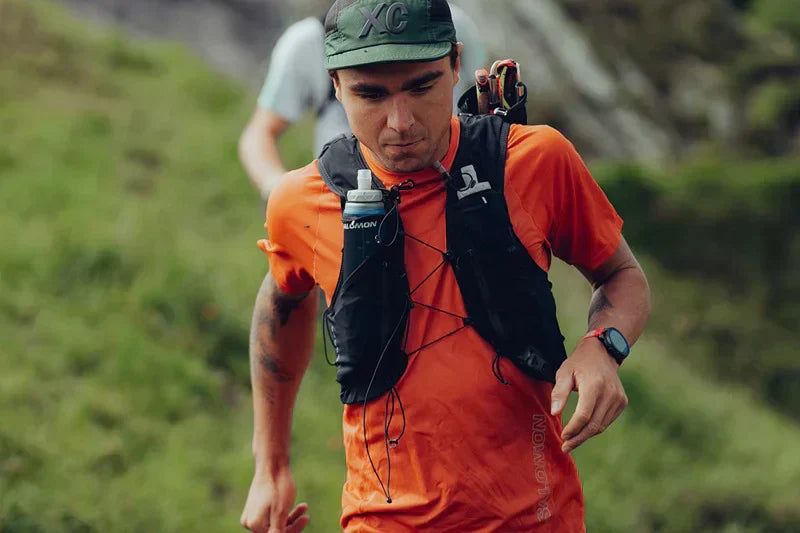
Getting started with ZoneSense: Your guide to smarter training
Have you tried Suunto ZoneSense yet? This article will help you get started with the breakthrough innovation in tracking real-time exercise intensity.
In endurance training, finding the right workout intensity is key to getting the best results. Many athletes wonder if they’re training too hard or not hard enough. Heart rate zones have been used to estimate intensity, but they don’t account for changes from one day to another, across different activity types or during long workouts.
Now, Suunto ZoneSense offers a breakthrough in tracking real-time intensity. It uses heart rate variability (HRV) to give accurate insights, helping athletes optimize their performance like never before.
All Suunto users training with a heart rate belt can unlock ZoneSense intensity analysis through the Suunto app. For real-time data, ZoneSense is available on the latest Suunto watches – Suunto Vertical, Suunto Race, Suunto Race S, Suunto Ocean, and Suunto 9 Peak Pro.
Step 1: Learn how to get started with Suunto ZoneSense. All you need is a Suunto sports watch, a Suunto heart rate belt and the Suunto app on your phone.
Step 2: Learn how to use Suunto ZoneSense in real-time, during an activity.
A great way to get started is by following ZoneSense during a long, easy endurance workout. Begin with a 10-minute warm-up that allows ZoneSense to establish your baseline for the day, then keep your effort in the green zone.
Step 3: Learn how to view Suunto ZoneSense data in the Suunto app.
Suunto ZoneSense lets athletes take control of their training like never before. It uses heart rate variability (HRV) to show whether your workout effort is aerobic (low stress) or anaerobic (high stress) in real time. With ZoneSense, you can fine-tune your intensity during any activity—running, cycling, swimming, and even team sports—helping you make every session count. Say goodbye to guessing your effort level and hello to smarter, more effective training.
Whether you’re building your aerobic base or pushing your limits with high-intensity intervals, ZoneSense is the key to unlocking your potential. It keeps your long runs in the optimal green zone, shows when you’ve hit your anaerobic threshold during intervals, and adapts seamlessly across different sports and conditions. By tracking real-world effort and avoiding overtraining, Suunto ZoneSense sets a new standard for athletes aiming to train with precision and perform at their best.
Learn more about Suunto ZoneSense use cases here.

“Running” The Euchre Bar Massacre
How does bushwhacking 50 miles and 25k feet of elevation gain without a set course sound?
We asked Suunto ambassador Max King who did just that at the Euchre Bar Massacre near Foresthill, California. Read on and Max will explain why it isn't your typical running race!
”I don't usually do races where a finish is a good result, but every so often, I humbly find myself in one of those situations where I'll just be happy to finish...literally.
On October 16th, I found myself in exactly that situation. This was one of those peculiar races where there’s no "elite" field, there's no finishers medals, or t-shirts. It's just you versus the course, and it's going to do its best not to let you cross that finish line.
And I'm not talking about the self-deprecating, ”Oh gee, I hope I finish,” type of mentality when the normal finish rate is well north of 80%. I'm talking about a race where the finish rate is typically lower than 10% and no one in the field is trying for a fast time.
The Euchre Bar Massacre is in a similar vein to the popular Barkley Marathons in Tennessee, where people – not very many of them – wander around the mountains looking for books to rip pages out of and therefore "prove" they have completed the course. And I use "course" loosely; while there is a route that you are supposed to follow, it's unmarked, mostly off-trail, and ultimately, you're not going to follow the same ”course” as everybody else. (See Max’s Instagram post for book pictures!)
Due to the off-trail nature of the Euchre Bar Massacre, there is significant bushwhacking leading to typical finish times over 24hrs. Did I mention it is only a 50 miler?! The length of the course is irrelevant. Distance on a course like this is measured in ”hills”, as in ”it is 3 hills until the drop bags” rather than ”it's only 10mi till the drop bags.” The vertical gain of each hill and difficulty of the bushwhacking determines the time until you can drop from the race...or stubbornly continue on to the next set of hills.
These types of events aren't popular, and it's not because they are difficult. Trail runners do plenty of hard things. They appeal to a small number of folks that are drawn to this type of adventure. I think each participant's reasons may vary but for me, it's the whole combination of elements that really sucks me in. I love the wild nature of this type of race.
It is remote – I raced alone for 20hrs without seeing another person other than about 10 minutes at the drop bags.
It is rugged, obviously – it has 25k of vert, tons of vegetation, and about half is off-trail. I looked like I was stuffed in a burlap bag with 20 cats before I was done.
It is routeless – with no course markings you're going by map and compass and when it gets dark, you better know how to use that compass. I kept telling myself ”trust in the compass” as I was going in a direction that my mind was telling me was completely the wrong direction. I also did a complete 180-degree circle around a patch of manzanita in the middle of the night and realized I'd been there before. That's a terrible feeling.
There's a lot about an event like this that appeals to me and a few nutty others but doesn't appeal to a lot more people out there. And that's okay.
Now, If you're thinking of getting into one of these, here are a few tips:
First, reconsider your decision...
Second, practice navigating, bushwhacking, and being alone for a long time in a safe space.
Third, put ”For The Win”, or ”FTW” on your calendar as there are no winners, just finishers.
Words and images by: Max King
Thank you for this recount, Max! We sure know who to call when we want all pain and no gain!

Revealing Secrets of the Heart with DDFA by MoniCardi
A Technological Breakthrough from Tampere University
MoniCardi, a medical technology and software company originating from Tampere University, has been diligently developing novel and heart rate variability (HRV) methods to decode the intricate phenomena of the human body. The MoniCardi team aims to unveil the various physiological characteristics influenced by the heart's behavior, opening new frontiers in health and performance measurement.
The Foundation: Validation with Massive Datasets
MoniCardi's groundbreaking research is rooted in statistical and time-series analysis methods originally developed in computational physics. These methods have surprising, yet highly impactful applications in electrocardiography, including HRV analysis.
MoniCardi's novel methods and their usefulness have been validated in various scientific studies [1-9] and they have been featured in the leading conferences of cardiology such as the Scientific Sessions of American Heart Association. The studies include exploitation of massive datasets such as the extensive Finnish Cardiovascular Study (FINCAVAS), which contains comprehensive measurement data from 4386 participants of a clinical stress test. In a recent breakthrough study [1], it was found that MoniCardi's HRV analysis of a one-minute rest phase prior to the test predicts sudden cardiac death significantly better than the conventional analysis of the complete 20-minute stress test (hazard ratios of ~2.5 and ~1.5, respectively). The superiority of MoniCardi increases further when considering all the other risk factors in the analysis.
Outside clinical studies, MoniCardi's patented methodology allows accurate estimation of metabolic thresholds in sport applications. This was confirmed in a ground-breaking study published by the team in the leading physiological journal in 2023 [2]. The study was featured in several national and international news sites, including a full-page article in the main Finnish newspaper Helsingin Sanomat (link below). The results are currently under validation in academic collaboration between Tampere University and the Finnish Institute of High-Performance Sport (KIHU). Through a partnership with Suunto launched in 2024, MoniCardi's novel technology is now entering in the use of professional athletes, sport enthusiasts and all the consumers interested in these novel features that push the HRV analysis into a completely new level and ensure practical and actionable results.
Understanding Heart Rate Variability (HRV)
Heart rate variability (HRV) measures the variation in the time intervals between consecutive heartbeats. By analyzing the fluctuations in these intervals, it is possible to gain insights into the body's state, particularly the autonomic nervous system's influence on the heart. Conventionally, HRV has been used to gauge recovery states during sleep through RMSSD (Root Mean Square of Successive Differences), which observes nightly changes in HRV to detect stress levels. At rest, the body shows significant variability between heartbeats, known as HRV. However, as the body encounters increased stress, the autonomic nervous system shifts into the fight-or-flight mode, resulting in minimal heart rate variability. This reduction in HRV can be used as an indicator to assess stress levels.
Introducing DDFA: A Revolutionary Measurement Technology
HRV methods are conventionally split into time-domain, frequency-domain and nonlinear methods. One of the most common nonlinear methods is Detrended Fluctuation Analysis (DFA) developed in the early 1990s. The key information provided by DFA is the overall long-term characteristics of HRV in terms of correlations, in particular, how changes in heartbeat intervals at some time affect the changes at another time. This information has powerful predictive value, but the practical usefulness of this information was unleashed only recently, when Dynamical DFA (DDFA) was developed [8,9] and further refined to assess changes in HRV correlations in a time-sensitive manner [10]. In brief, DDFA utilizes a multitude of "measure sticks" from 4 up to >50 consecutive heartbeats. At every instant of time, DDFA then gives a so-called scaling exponent - a characteristic feature of correlations in heartbeat intervals - for all these measure sticks simultaneously. This information can be precisely mapped to the physiological state during physical exercise.
Real-Time Intensity Monitoring
DDFA excels in assessing real-time changes in the heartbeat correlations during exercise. Training intensity directly correlates with time- and scale-dependent variations in the DDFA scaling exponent. Research indicates that increasing intensity in physical exercise decreases the scaling exponents. Eventually, at very high intensities, the beat-to-beat intervals may show so-called anticorrelations, where large and small beat-to-beat intervals alternate in a specific manner depending on the time scale. This information allows for precise monitoring of exercise intensity and physiological thresholds.
Visualizing DDFA in Action
A pivotal study, "Estimation of Physiological Exercise Thresholds Based on Dynamical Correlation Properties of Heart Rate Variability," published in Frontiers in Physiology in 2023 [2] illustrates DDFA's capabilities. The research paper presents an exercise scenario where intensity increases over time. The cyan lines denote the two metabolic thresholds: LT1 (aerobic threshold) and LT2 (anaerobic threshold), with the black dotted set on locations where these thresholds would be based blood lactate levels.
This illustrates an ideal scenario where the DDFA-based analysis yields threshold levels nearly identical to those obtained using lactate-based threshold definitions. While this represents the optimal case, variations are expected in real applications. The DDFA analysis and lactate-based thresholds may differ from case to case, with heart rate measurements typically matching within +-5 beats per minute. There are also uncertainties inherent in lactate thresholds, which are subject to interpretation.
Validity up to clinical accuracy
MoniCardi methodology has been used to predict the overall cardiac risk and sudden cardiac death [1], and several cardiac diseases such as long QT syndrome [4,5], atrial fibrillation and congestive heart failure [in preparation]. The methods have also been applied to estimate stress and sleep stages [6,7]. The prediction of sudden cardiac death [1] has gained traction and it was featured in all the big news sites in Finland (YLE, Helsingin Sanomat, Ilta-Sanomat, Aamulehti) and on several international news sites (list below).
In medical technology, MoniCardi is currently collaborating with Cardiolex Medical, a Swedish MedTech company developing modern ECG devices and systems. MoniCardi is also seeking partners in wearable technologies to bring cardiac risk assessment to mass markets.
References:
[1] Jussi Hernesniemi, Teemu Pukkila, Matti Molkkari, Kjell Nikus, Leo-Pekka Lyytikäinen, Terho Lehtimäki, Jari Viik, Mika Kähönen, Esa Räsänen, Prediction of sudden cardiac death with ultra-short-term heart rate fluctuations, JACC: Clinical Electrophysiology, 2024
[2] Matias Kanniainen, Teemu Pukkila, Joonas Kuisma, Matti Molkkari, Kimmo Lajunen, and Esa Räsänen, Estimation of Physiological Exercise Thresholds Based on Dynamical Correlation Properties of Heart Rate Variability, Front. Physiol. 14 (2023).
[3] Teemu Pukkila, Matti Molkkari, Matias Kanniainen, Jussi Hernesniemi, Kjell Nikus, Leo- Pekka Lyytikäinen, Terho Lehtimäki, Jari Viik, Mika Kähönen, and Esa Räsänen, Effects of Beta Blocker Therapy on RR Interval Correlations During Exercise, Computing in Cardiology 50 (2023) 10.22489/CinC.2023.104
[4] Matias Kanniainen, Teemu Pukkila, Matti Molkkari, and Esa Räsänen, Effect of Diurnal Rhythm on RR Interval Correlations of Long QT Syndrome, Computing in Cardiology 50 (2023) 10.22489/CinC.2023.287 [5] T. Pukkila, M. Molkkari, J. Kim, and E. Räsänen, Reduced RR Interval Correlations of Long QT Syndrome Patients, Computing in Cardiology 49 (2022) 10.22489/CinC.2022.284
[6] Teemu Pukkila, Matti Molkkari and Esa Räsänen, Dynamical Heartbeat Correlations During Complex Tasks – A Case Study in Automobile Driving, Computing in Cardiology 48 (2021) 10.23919/CinC53138.2021.9662676
[7] M. Molkkari, M. Tenhunen, A. Tarniceriu, A. Vehkaoja, S.-L. Himanen, and E. Räsänen,
Non-Linear Heart Rate Variability Measures in Sleep Stage Analysis with Photoplethysmography, Computing in Cardiology 46 (2019); 10.22489/cinc.2019.287
[8] M. Molkkari, G. Angelotti, T. Emig, and E. Räsänen, Dynamical Heartbeat Correlations During Running, Sci. Rep. 10, 13627 (2020)
[9] M. Molkkari and E. Räsänen, Robust Estimation of the Scaling Exponent in Detrended Fluctuation Analysis of Beat Rate Variability, Computing in Cardiology 45 (2018); 10.22489/CinC.2018.219
[10] M. Molkkari and E. Räsänen, Inter-beat interval of heart for estimating condition of subject, Patent pending.
Latest news of MoniCardi
International news:Science Daily: https://www.sciencedaily.com/releases/2024/06/240613140808.htmScience Alert: https://www.sciencealert.com/new-algorithm-can-predict-and-help- prevent-sudden-cardiac-deathMirage News: https://www.miragenews.com/tampere-university-researchers- predict-sudden-1255528/Medical XPress News: https://medicalxpress.com/news/2024-01-method-based-series-analysis-thresholds.html
Finnish news:
YLE: https://yle.fi/a/74-20093771Helsingin Sanomat: https://www.hs.fi/tiede/art-2000009847625.htmlIlta-Sanomat: https://www.is.fi/terveys/art-2000010505400.htmlAamulehti: https://www.aamulehti.fi/tiedejateknologia/art-2000010497986.html https://www.aamulehti.fi/tiedejateknologia/art-2000009863997.htmlSTT: https://www.sttinfo.fi/tiedote/70082024/aikasarja-analyysiin-perustuva-uusi-menetelma-helpottaa-urheilun-kynnysarvojen- maarittamista?publisherId=69818730&lang=fi

Introducing ZoneSense: Revolutionizing Intensity insights with Heart Stress Measurement
ZoneSense offers insights into whether your body's physiology is working aerobically with lower stress levels or if it has transitioned into higher stress, anaerobic efforts.
Different sports impose varying demands on your cardiovascular system. Measuring intensity with heart rate can be difficult as the heart rate changes across different activities such as cycling and cross-country skiing, where same heart rate can be aerobic in one sport and an-aerobic in another. Additionally, daily performance fluctuations up to 5-10% can make it challenging to use predefined intensity levels.
ZoneSense addresses these challenges by measuring the heart's response to workout intensity in real-time. This innovative technology empowers athletes to monitor their exertion levels daily across various sports disciplines. The following examples show how the ZoneSense measures your heart in different activities.
Aerobic sessions
Aerobic long run
To keep the long runs purely aerobic, athlete should keep the ZoneSense state green most of the time. Its normal to see constant fluctuation of the DDFA index value in easy efforts such as in this example mainly around +0 - +0.4. On outdoor runs where athlete might need go over some hills, the Zonesense can illustrate this by turning to an-aerobic time to time. This type of few spikes that goes bit over aerobic threshold, is normal aerobic workouts.
Long ride with 3x45min an-aerobic effort
The example illustrates a long bike ride of 5.5 hours, where the last part of the ride includes three 45minute sections with “Ironman race pace effort”. The three 45min work sections illustrate the effort at and above aerobic threshold as DDFA index turn mostly to yellow. As the temperature is close to 30 degrees, one can observe a raised heartrate after 3.5 hours, where the workout intensity is kept the same, but heart rate has now elevated by 15-20 beats per minute. ZoneSense however shows the steady intensity level.
Interval sessions
Long intervals - Cycling
The harder interval sessions where athlete is working at an-aerobic threshold or even above can be hard to quantify on everyday sessions, do I go too hard or is it too easy. The ZoneSense helps to illustrate if you were reaching the threshold or did you go even beyond. The example here illustrates 6 x 7 min intervals above an-aerobic threshold. The ZoneSense gradually increases during the first 2-3 minutes in interval to get above threshold level.
Interval workouts are a common way to do the harder training efforts. ZoneSense DDFA index requires a longer period of consistent intensity due to time it takes the body to reach the homeostasis. The ZoneSense requires the effort to be consistent at least 2-3 minutes to accurately represent the intensity level, with shortchanges this is not achieved. In the above example if the interval would have been stopped after 2 minutes, even with high effort the ZoneSense would have not reached the an-aerobic state. This can also be seen from the heart rate in the background, during the first 2 minutes the heart rate is rising despite constant effort. This is caused by the heart’s slow adaptation to the changed intensity level.
Long intervals - Open Water Swimming
ZoneSense is not limited only to most common endurance sports such as running and cycling. Here is an example of an open water swim session where an athlete has done a 12 x 300m repetitions in lake with a short 30-45s rest between. The goal of the session has been to swim in good sustainable tempo pace. The ZoneSense illustrates this by reaching the an-aerobic level at end of each repetition. The pace is kept the same except with the last one being harder. The cumulative load of the work is illustrated by the last half of the repetitions always reaching an-aerobic state where the first ones don’t all reach this.
Long intervals - Rowing
Following is a rowing workout 4x6min hard efforts and 8x 40s with 20s recovery. ZoneSense shows effort reaching to over an-aerobic threshold. The shorts repetitions also reach red, as recovery is short.
Short intervals with short recovery - Cycling
With high volume of short intervals done with short recovery, the ZoneSense is able to illustrate the cumulative intensity. The example here illustrates the large volume of intervals with short recovery, 13x30s with 15second recovery. This effort can be shown as a black line illustrating cycling power. The ZoneSense DDFA index grows during the first five repetitions into an-aerobic range and then with next few following reps will reach the vo2max range represented in red color. This illustrates nicely the load for higher volume reps where the effort in power can be argued to be on correct level. Here the 15 seconds recovery is so short that the body’s homeostasis doesn’t recover into low intensity between the repetitions and rather describes the cumulative intensity of the constant intervals.
Short intervals with long recovery - Running
The ZoneSense is not able to monitor short bursts with longer recovery sessions in a meaningful manner. ZoneSense requires to reach a homeostasis with the intensity. The running interval example with 20x400m with 40 s recovery illustrates that the measurement does not indicate the harder running pace as interval duration is short with relatively long recovery. If the intervals would have been longer each interval would have reached an-aerobic intensity or if recovery would have been shorter the cumulative intensity impact would have been shown as in the previous example.
Higher Intensity Near Anaerobic Threshold
Half marathon
The following examples illustrate the ZoneSense in session where intensity is an-aerobic and reaches regularly an-aerobic threshold level. This example is from a half marathon race where recreational runner is pushing their own limits close to 1.5hours. The racecourse has some turns and hills, which impact on the intensity effort that athlete is working. The ZoneSense shows the intensity at an-aerobic effort in yellow with several sections shown at red in vo2 range. When comparing the black line illustrating the pace, one can observe a slight gradual decline of the pace. Similarly, one can see slight decline in heartrate. However the ZoneSense illustrate the yellow & red sections as athlete has tried to keep the intensity as high as possible.
Ice hockey with various effort spikes.
Its common method for endurance sports athletes to do a performance test in laboratory to establish the aerobic and an-aerobic levels as heart rate, pace or power. But for many sports this is not possible as the laboratory protocols do not represent sport in real life. Here is an example of an ice hockey game where players have been using ZoneSense to measure their effort during the game. Each work effort is shown as an-aerobic work where spikes in VO2max area.
For team sports such as ice hockey, football, basketball its very difficult to understand the real intensity levels as laboratory test done in treadmill or exercise bike doesn’t truly correlate to the effort in the field. ZoneSense could be a solution for some of these sports or training sessions for these athletes.
The challenge with ZoneSense is the requirement for constant work. Effort that leads to homeostasis a.k.a. balance needs to be long enough to DDFA index truly represent the intensity of the work. With many team sports and racquet sports, this can be a limitation with very short work durations and long rest periods. However, even if the games themselves couldn’t be measured with ZoneSense the training sessions with enough cumulative work could potentially be applicable for ZoneSense. This would be the long waited intensity measurement in team sports.
Muscle fatigue impact
ZoneSense is measuring stress with heart rate variability. This stress effect correlates to metabolic state of the body, where less stress is aerobic, and more is an-aerobic. However, the metabolic state is not the only effect but can be induced with other stress factors. Here is a test example where an athlete has done two ramp up protocols with ergometer in one workout. The first part can be seen from 8min-16min and the second at 1h 15min – 1h 23min. The middle part of the session was strength training heavy leg exercises. The impact of fatigue in leg muscles can be witnessed on the ramp up protocol where ZoneSense reaches a higher intensity range compared to the first version. The impact is not massive, but still illustrates the other stressful factors.
By measuring the actual response of the heart to workout intensity, ZoneSense offers athletes a reliable and daily tool to optimize their training across different sports. This technology is set to revolutionize how athletes understand and manage their physical stress levels, enhancing performance and recovery.
A similar impact of muscle load and potential different intensity levels can be found in the hiking session. The steep uphill and downhill make the workout become an-aerobic. Where the heartrate itself especially in downhill wouldn’t indicate this. The muscle fatigue and stress associated raises the ZoneSense intensity.
